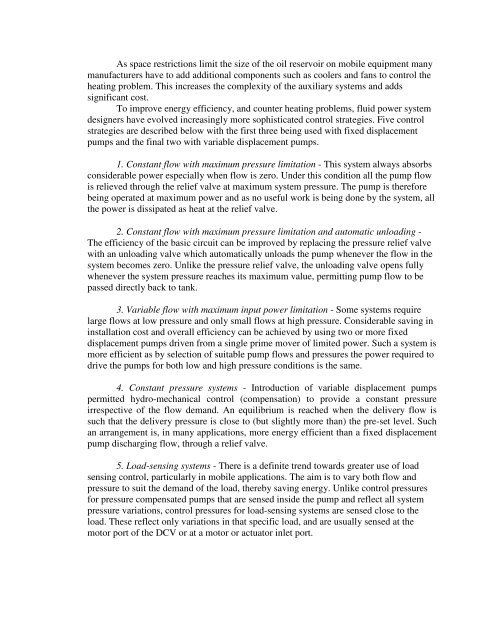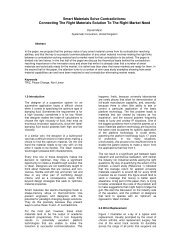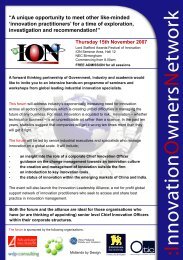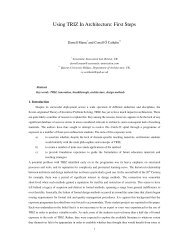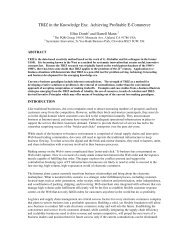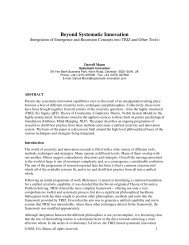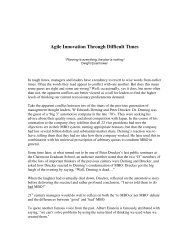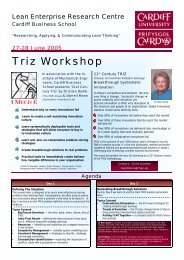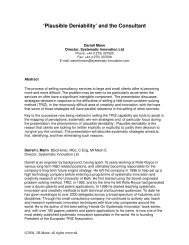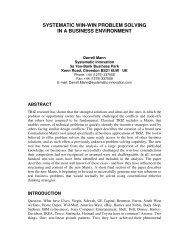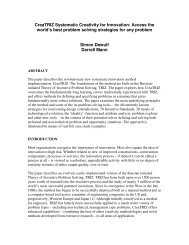TRIZ-Based Root Cause Failure Analysis For Hydraulic Systems
TRIZ-Based Root Cause Failure Analysis For Hydraulic Systems
TRIZ-Based Root Cause Failure Analysis For Hydraulic Systems
Create successful ePaper yourself
Turn your PDF publications into a flip-book with our unique Google optimized e-Paper software.
As space restrictions limit the size of the oil reservoir on mobile equipment many<br />
manufacturers have to add additional components such as coolers and fans to control the<br />
heating problem. This increases the complexity of the auxiliary systems and adds<br />
significant cost.<br />
To improve energy efficiency, and counter heating problems, fluid power system<br />
designers have evolved increasingly more sophisticated control strategies. Five control<br />
strategies are described below with the first three being used with fixed displacement<br />
pumps and the final two with variable displacement pumps.<br />
1. Constant flow with maximum pressure limitation - This system always absorbs<br />
considerable power especially when flow is zero. Under this condition all the pump flow<br />
is relieved through the relief valve at maximum system pressure. The pump is therefore<br />
being operated at maximum power and as no useful work is being done by the system, all<br />
the power is dissipated as heat at the relief valve.<br />
2. Constant flow with maximum pressure limitation and automatic unloading -<br />
The efficiency of the basic circuit can be improved by replacing the pressure relief valve<br />
with an unloading valve which automatically unloads the pump whenever the flow in the<br />
system becomes zero. Unlike the pressure relief valve, the unloading valve opens fully<br />
whenever the system pressure reaches its maximum value, permitting pump flow to be<br />
passed directly back to tank.<br />
3. Variable flow with maximum input power limitation - Some systems require<br />
large flows at low pressure and only small flows at high pressure. Considerable saving in<br />
installation cost and overall efficiency can be achieved by using two or more fixed<br />
displacement pumps driven from a single prime mover of limited power. Such a system is<br />
more efficient as by selection of suitable pump flows and pressures the power required to<br />
drive the pumps for both low and high pressure conditions is the same.<br />
4. Constant pressure systems - Introduction of variable displacement pumps<br />
permitted hydro-mechanical control (compensation) to provide a constant pressure<br />
irrespective of the flow demand. An equilibrium is reached when the delivery flow is<br />
such that the delivery pressure is close to (but slightly more than) the pre-set level. Such<br />
an arrangement is, in many applications, more energy efficient than a fixed displacement<br />
pump discharging flow, through a relief valve.<br />
5. Load-sensing systems - There is a definite trend towards greater use of load<br />
sensing control, particularly in mobile applications. The aim is to vary both flow and<br />
pressure to suit the demand of the load, thereby saving energy. Unlike control pressures<br />
for pressure compensated pumps that are sensed inside the pump and reflect all system<br />
pressure variations, control pressures for load-sensing systems are sensed close to the<br />
load. These reflect only variations in that specific load, and are usually sensed at the<br />
motor port of the DCV or at a motor or actuator inlet port.


